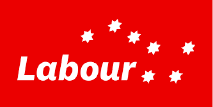This article was published in the Irish Times here under the title “Rapid expansion of solar power capacity gives us grounds to be hopeful” on the 23rd of March 2023.
There is hardly ever any good news on the climate front. However, a recent report by the think tank Ember found that the energy price shocks triggered by Russia’s invasion of Ukraine did not lead to a rise in coal burning to replace gas. This was not expected: some EU member states had even lifted restrictions on coal burning plants to ensure that they could make up any shortfall in gas generation.
Writing for Greta Thunberg’s Climate Book, scientist Glen Peters states that the progress of the climate crisis does not afford us the time to watch the world slowly transition away from fossil fuels. Energy transitions are not necessarily driven by policy alone, but by technology and social change. Think of the cars replacing horses and mobile phones making landlines redundant. We need giant leaps of change if renewables are to dominate our energy system as opposed to just replacing fossil fuels for additional energy demand or to replace retiring fossil plants. Renewables will need to form the backbone of the energy system: not, as things stand, a feel-good supplement to the current one that is destroying the planet.
Solar PV is becoming the lowest-cost option for new electricity generation in most parts of the world. According to the International Energy Agency (IEA), solar photovoltaics (solar PV) generation increased by a record 179 TWh (up 22%) in 2021 to exceed 1 000 TWh or an increase of 190 GW of installed capacity. The Agency points out however that an average annual growth rate of 25% in the period 2022-2030 will be required to follow the net zero emissions scenario, corresponding to a threefold increase in annual capacity deployment until 2030. These growth rates would be spectacular. Are they realistic?
While according to the IEA utility scale solar PV is the most competitive source of PV generation in most parts of the world, high fuel and electricity prices in 2021 meant that solar PV became an increasingly attractive alternative for many consumers, and this has only further accelerated since the invasion of Ukraine in February 2022. According to a recent article, the Netherlands is the unquestionable leader in solar power production in the EU and has seen a huge increase of solar power in its electricity mix, increasing the share of solar from 1% in 2015 to a whopping 14% in 2022. In 2022 the country added 1.8 gigawatts (GW) of rooftop solar capacity, 38% more than in 2021. A million Dutch consumers are now taking part in energy cooperatives which overcome the usual technical, social, and cost barriers to the deployment of renewables. Pioneered in Germany, renewable energy cooperatives as part of the Energiewende there now number over 900, with 220,000 individual members and €3.3 billion invested in 8 TWh of community-owned electricity generation.
The Netherlands has a similar cooperative structure called the ‘Postcoderoosregeling’. The scheme allows individuals to invest in locally generated energy through energy cooperatives that develop a variety of energy projects but are entirely community owned and led. Renewable energies give communities a chance to shape their own energy futures in a way that would never incentivise utilities whose priority is to generate the cheapest possible energy and sell it on at the highest possible price. The Dutch system offers reduced tax rates for the individual, and individuals can invest in renewable energy sources which are not located on their own property.
However, one concern is that the uptake of solar PV by households is only feasible for land and homeowners with suitable sites for deployment. High levels of solar PV generation can even drive up total system costs and making grid integration more complex, and leaving renters and apartment-dwellers to foot the bill for maintaining the grid. For this reason, the IEA recommends tariff reforms to secure sufficient revenue to pay for fixed network assets and to ensure that the cost burden is allocated fairly among all consumers.
The challenge facing the growth of renewables sector will not be technology diffusion, raw materials or even price: land availability and community acceptance present the biggest obstacles to scaling up solar PV at the rates required. According to the Irish solar Energy Association (ISEA), achieving the 2030 solar targets could deliver sizeable energy savings to consumers. There is a pipeline of projects ready to go into planning. But farmers – arguably the priority group of stakeholders that could hold up climate action – are inhibited by tax rules from leasing land, and what appear to be arbitrary limits to the sale of excess electricity back to the grid. Community energy wind and solar projects still play a tiny role in Ireland’s power system, but there is no reason why Ireland couldn’t follow the Dutch and German model of community energy cooperatives.
This generation’s challenge is to design an energy system that allows fair access to the grid to all energy producers and consumers alike. So what on earth are we waiting for?

